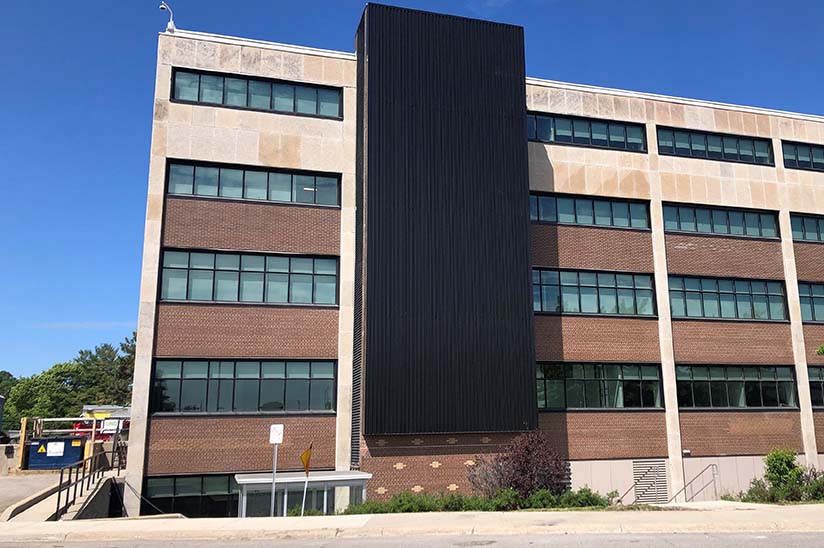Client: Recreation Association of the Public Service of Canada
Location: Ottawa, Ontario
Size: 16,351 m2 (176,000 ft2)
JLR was engaged on two related projects studying the energy systems of the Recreation Association of the Public Service of Canada (RA Centre). The facility is an extensive 176,000 ft2 not-for-profit recreation centre consisting of three wings built between 1950 and 1970. The RA Centre partnered with CoEnergy Ontario Co-Operative Inc. for third-party financing of deep green energy retrofits at the facility.
First, an American Society of Heating, Refrigerating and Air-Conditioning Engineers (ASHRAE) Level 2 Energy Audit was undertaken. The analysis of energy and water consumption data from the facility was completed and used to estimate building energy and water consumption in a typical year. This included an energy use breakdown into multiple end-use categories, which required investigations of equipment age and functionality, extraction of trends within energy data and on-site investigations. The primary goal of the audit was to identify practical efficiency measures. A portfolio of potential energy saving measures was developed, including no and low cost measures, along with modifications, retrofits and upgrades to equipment and building envelop. For each measure, the energy savings, capital costs and greenhouse gas (GHG) emissions impacts and key financial metrics were presented. More than 2 GWh/yr of energy savings and 190 ktCO2e/yr of GHG reductions were identified.
The water audit included an inventory of water use appliances and a list of potential water saving measures along with the associated cost benefit analysis. The energy audit also included the potential for photovoltaics (PV).
Second, a feasibility study of the heating systems for the RA Centre was done. The RA Centre is served by the heat loop from the federal Confederation Heights central heating and cooling plant (CHCP). This district energy heat loop is in the planning stages of transitioning from high temperature hot water (HTHW) to low temperature hot water (LTHW), and the RA Centre must either retrofit its building heating systems to accommodate the LTHW or disconnect in favor of an alternative method of heat supply. This study identified and compared the following systems options:
- Transition to LTHW.
- Disconnect and use conventional gas boilers in each wing.
- Disconnect and use central biomass boilers.
- Disconnect and use ground source heat pumps.
The analysis considered the age of the existing equipment, the degree to which distributions systems within the building would need to be retrofit and the suitability of the proposed solutions to future facility expansion. The analysis of all options was evaluated based on budgetary estimates for capital costs and operations and maintenance costs, and annual GHG emissions.







